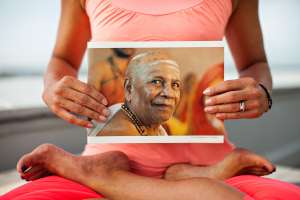I made a to-do list today. It had your normal things on it like: go grocery shopping, pay the bills, wash the dog, and buy stamps. Sometimes those lists can seem daunting. Now imagine you had to put on that list “remember to breathe”…Thankfully, we don’t have to remember to breathe, or do we? Life begins on an inhale and ends on a exhale. You never have to tell your body to do it again, and again, and again. Can you imagine what life would be like if things in our body needed our attention for them to happen? What if you had to think when you wanted to put a shirt on: “I need to move my arms up above my head to put my shirt on.”,or if you wanted to smile at someone: “I need to contract my facial muscles to smile”, or “I need to digest lunch now.”? You would be a wreck, trying to do all those things and everything else you are responsible for. Thank goodness, for the things that were ingeniously designed into our survival like breathing, and digesting, smiling and getting dressed. But oddly enough, we do forget to breath, not for long extended periods of time, but enough to interrupt our prana. Prana is our life-giving force.
Have you ever experienced having the wind knocked out of you? It’s frightening and terribly uncomfortable. It strongly invokes panic. You grab at your chest, and bug out your eyes while trying to engage everything you know about breathing as quickly as you can. But the reality is we don’t know that much about breathing. It’s instinctive. Or is it? Instinctive means it is an unconscious skill. This would explain why no one had to or could explain to you how to inhale at birth. It’s already written into our life manuscript. Even though it’s already written into to our behavior, we still can lose sight of its necessity and take on bad habits like shallow breaths and short, incomplete breaths. Sometimes we even go too far the other way where we are breathing too quickly and forcefully, like when we are scared. Our breath is strongly influenced by outside experiences. Which is why we have the ability to impact or breathing from the outside in, even though it happens from the inside out.
There is this expression that goes “Life is not measured by the number of breaths you take, but by the number of moments that take your breath away.” Now why would we want our breath taken away? Because when those moments happen it means we have stopped, we have become fully present. You are never more fully present then when you stop your breath! Which is why yoga practitioners do their pranayama exercises. One of the exercises is to stop your breathing, briefly, but then overtime try to increase stopping it for longer periods of time. This stopping of our breath draws our attention very quickly to the here and now, allowing us to reflect on what’s really going on in that moment. What thoughts are going through us and what effect are they having on us physically?
But what about the moments in life that are more mundane and repetitive? And the way that we breathe into those situations. Those are the moments that are probably more detrimental then having the wind knocked out of you. Because those moments that you are not breathing fully, living present, those moments are like leaving a faucet dripping. You are just wasting your nectar, your ojas, your prana right down the drain.
It’s funny, because as I have been sitting here brainstorming and trying to write this, I have noticed that when I am deep in concentration, I stop breathing. This happens periodically and at other times I was breathing very shallow. If I do not become aware of these moments, what might happen? Well I think the most apparent physical response in our body to bad breathing is feeling tired, dull, maybe even depressed. To me, that’s why yoga and running feel so good. Because they are all about the breathing and my involvement with something that is unconscious in behavior. Both of those exercises take my awareness inward instead of outward. I feel after yoga and running, that I have cleared my head and that I am awake, vibrantly awake.
More moments in life should be like that. With our yoga practice we have the opportunity to take something that is instinctive and make it interesting. My teacher, Tim Miller says that “to be bored, is just a lack of interest.” So let’s make our breathing interesting. The breathing you do in a yoga practice should be done similarly to the way a scuba diver comes to the surface. If the surface of the water represents our mind, then we want to disturb it as little as possible. Breathing needs to be done slowly. You can not rise to the surface quickly in scuba diving or you’ll experience the bends, which is life threatening. Your very own breath begins to poison your blood. Is it possible that our poor breathing habits are poisoning our mind with, laziness, inertia, illness?
The sutra’s talk a lot about breathing, but there is that one that mentions the poison’s of our mind, the “halahala” of our life. Sutra 30, Chapter 1. Vyadhi styana samsaya pramada alasya aviriti bhrantidarsana alabdhabhumikatva anavasthitatvani citta viksepah te antarayah – the obstacles that distract the mind are illness, dullness, doubt, carelessness, laziness, overindulgence, illusion’s about oneself, lack of perseverance, and instability. Breathing with awareness has the ability to impact all of these afflictions. Breathing with awareness exposes things that might be subtle and constantly ignored by lack of awareness. As sutra 12, Chapter 2 says, “Klesa mulah karma asayah drsta-adrsta janma vedaniyah” – Acts stemming from mental disturbance leave imprints that always show themselves in some form or other, visible or invisible. That should probably say conscious or unconscious. Yoga takes us to what is unconscious, to the things that are buried deeply and very subtle. So what we are looking for in our breath are the things that cause the breath to shift in any way, shape, or form. So in a way, you do need to put breathing on your to do list. Or at least put breathing practice on your list each day, to reflect on the things that might be disturbing your prana. If you make time for this it will give time back to you by giving you more energy, health and stability.
Urdhva Padmasana.
Yoga is the best way to do a breathing practice. To push your body in and out of postures a few times a week and to watch closely the fluctuations that come up, like the bubbles that come to the surface from the breathing tank of a scuba diver. Our mind ripples easily. Luckily yoga calms the fluctuations of the mind through pranayama and meditation/observation. A scuba diver must wear a heavy tank of air to breath underwater. But this is not how we should feel when walking around in our body. Let’s not get to a place where breathing feels difficult and tiring. Let’s let our breath be liberating. Let’s make breathing our lifeline to the here and now. When ever you are feeling overwhelmed, let you breath draw you inward to the present. Let’s not add anymore then what we already have on that to-do list. Be grateful breathing happens without your thought, but that when you do bring it to your attention you are forever reminded to live a life that is taking your breath away. Away to the now, which is where life IS happening.




